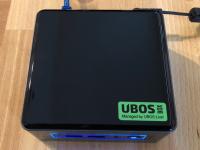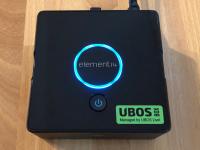2018-12-13
Installing Nextcloud 15 on UBOS versus other Linux distros
Nextcloud 15 was released this week, and tutorials are appearing on the web how to install it on various operating systems. As a UBOS user, I can only marvel how complicated it is … compared to UBOS. Let’s compare:
-
on Ubuntu: Nextcloud auf Ubuntu Server 18.04 LTS mit nginx, MariaDB, PHP, Let’s Encrypt, Redis und Fail2ban. States that the required amount of work is about 3 hours.
-
on Ubuntu: How to install Nextcloud 15 on Ubuntu with php7.3-fpm Apache2 and HTTP/2. Admittedly UBOS currently does not do fpm or HTTP/2, but those only add minimally to the length of the instructions. About 1400+ words of instructions to follow.
-
on OpenBSD: NextCloud on OpenBSD - updated. Says: “coffee is needed”. About 1800 words of instructions to follow.
-
on Synology: How to fix PHP 7 bash error to update Nextcloud on Synology? Only deals with one possible error. Approx 460 words of instructions to follow.
(Words counted by copy-pasting the “meat” of the instructions from Firefox “reader view” into BBEdit, and using their word count)
In comparison, here are the instructions for UBOS. Enter the following commands, and answer the questions:
% sudo ubos-admin update
% sudo ubos-admin createsite
If you’d like the Redis cache, enter nextcloud-cache-redis in the question about accessories.
And if you want a letsencrypt certificate for your site, append --tls --letsencrypt to the
second (createsite) command. This would make the setup similar to the above tutorials.
Either way, it takes, well, about 2 minutes, most of which is waiting for the computer to do its thing. Why should you have to bother with an operating system that makes installing Nextcloud more complicated?
Upgrades are even simpler:
% sudo ubos-admin update
Strike a solid win for UBOS I would think. #ubosrocks




